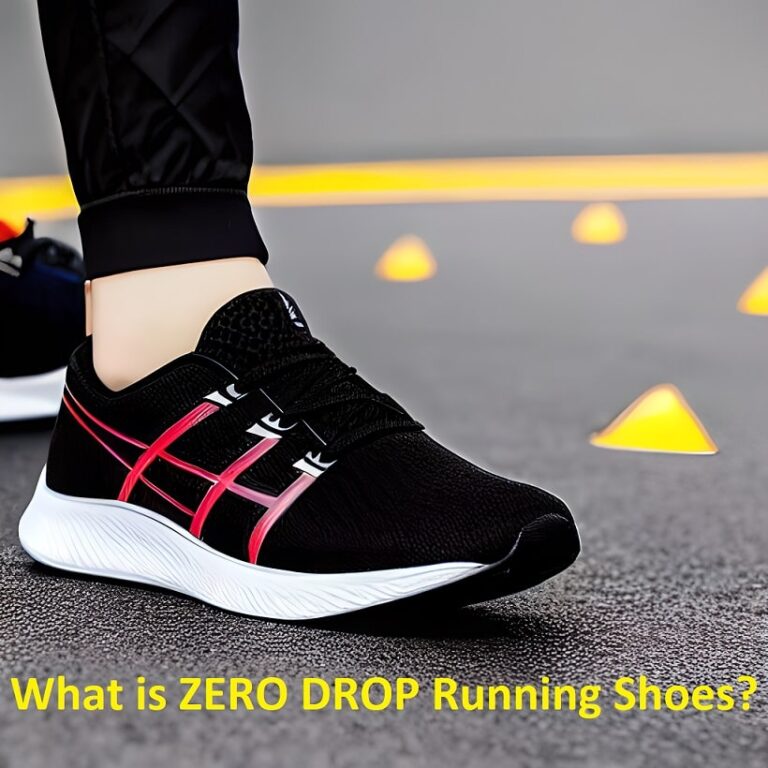What are Neutral Running Shoes? {The Ultimate Guide}
Looking for the perfect running shoes can be overwhelming, especially if you’re a neutral runner who needs shoes that provide the right amount of cushioning and support. But fear not! In this guide, we’ll take a closer look at neutral running shoes and how they can help you run better and prevent injuries. Also Read WHAT IS ZERO DROP RUNNING SHOES?
Neutral running shoes have become increasingly popular due to their ability to provide excellent comfort and support while allowing your foot to flex naturally during your run. Our guide will give you all the necessary information on neutral running shoes, including their benefits, how they work, and the different types available in the market. By the end of this article, you will be well-informed on neutral running shoes and better equipped to make an informed purchase decision.
What are Neutral Running Shoes?
Neutral running shoes are a type of running shoe that is designed for runners who have a neutral gait or a foot that rolls inward slightly during impact. These shoes are built to provide cushioning and support to your foot while allowing it to flex naturally. The shoes also help to distribute your weight evenly across your foot, which helps to prevent injuries and discomfort during your runs.
What is difference between neutral vs Over pronation?
Neutral and overpronation are terms that describe how the foot moves during the gait cycle (the process of walking or running).
A neutral foot is one that lands on the outside edge of the heel and rolls inward slightly (pronates) before straightening out as the weight is transferred to the ball of the foot and toes. This type of foot motion is normal and helps to absorb shock and distribute pressure evenly across the foot.
Overpronation, on the other hand, is a condition where the foot rolls inward excessively, causing the arch to collapse and the foot to flatten. This can lead to an uneven distribution of pressure and increased stress on the feet, ankles, and knees, which can lead to pain and injury.
In summary, a neutral foot has a natural, healthy amount of pronation during the gait cycle, while overpronation involves excessive inward rolling of the foot that can lead to problems.
Benefits of Neutral Running Shoes
Neutral running shoes have several benefits that make them a popular choice among runners. One of the primary benefits is that they help to reduce the risk of injury. The cushioning in the shoes helps to absorb the shock of impact and distributes it evenly across the foot, reducing the strain on your joints and muscles. Additionally, the shoes promote a natural gait, which reduces the risk of over pronation or supination.
Another benefit of neutral running shoes is that they are versatile and can be used for various types of runs. Whether you are training for a marathon or going for a quick jog, neutral running shoes will provide the support and cushioning you need. They are also suitable for runners with different foot shapes and sizes.
How Neutral Running Shoes Work

Neutral running shoes work by providing cushioning and support to your foot, helping to distribute your weight evenly across your foot, and allowing your foot to flex naturally. The shoes achieve this through several features, including:
- Midsole cushioning: Neutral running shoes have a thick layer of foam in the midsole, which provides cushioning to your foot during impact.
- Heel-to-toe drop: This is the difference between the height of the heel and the forefoot of the shoe. Neutral running shoes have a low heel-to-toe drop, which promotes a natural gait.
- Flexibility: Neutral running shoes are designed to be flexible, which allows your foot to move naturally during your run.
Types of Neutral Running Shoes
There are different types of neutral running shoes available in the market. The most common types are:
- Road Running Shoes: These shoes are designed for running on roads and pavements. They provide excellent cushioning and support, making them ideal for long-distance runs.
- Trail Running Shoes: Trail running shoes are designed for running on rough and uneven terrain. They have a more aggressive outsole and provide better traction and support.
- Racing Shoes: Racing shoes are lightweight and designed for speed. They provide minimal cushioning and support, making them ideal for short-distance races.
Choosing the Right Neutral Running Shoes
Choosing the right neutral running shoes is crucial to your running performance and comfort. When selecting a pair of neutral running shoes, consider the following factors:
Arch Type: The arch type of your foot can affect the type of neutral running shoe that will work best for you. If you have a high arch, you may require more cushioning, while those with flat feet may require shoes with more support.
Type of Run: The type of run you plan to do can also influence the type of neutral running shoes you choose. For example, if you plan to run on rough terrain, you will need shoes with a more aggressive outsole and better traction.
Fit and Comfort: Always tryIn addition, neutral running shoes are often designed with a more spacious toe box to give your feet room to move around, and to avoid any unnecessary friction that could lead to blisters or hot spots.
Another factor that sets neutral running shoes apart from other types of running shoes is their durability. Neutral running shoes are built to last and can withstand the wear and tear that comes with regular use. They are often made with high-quality materials that are designed to withstand the elements and last through multiple seasons of use.
When shopping for neutral running shoes, it is important to keep in mind that every runner has unique needs and preferences. It is essential to find a shoe that is comfortable, provides adequate support, and meets your specific running goals. Some neutral running shoes may work better for long-distance runners, while others may be better suited for runners who prefer shorter, faster runs.
Conclusion
Neutral running shoes are an excellent choice for runners who have a neutral gait or a slight inward roll of their foot. They provide excellent cushioning and support while allowing your foot to move naturally during your run. Neutral running shoes also help to reduce the risk of injury and can be used for various types of runs. By choosing the right pair of neutral running shoes, you can improve your running performance and reduce the risk of injuries. So, next time you’re out shopping for running shoes, consider giving neutral running shoes a try.
FAQs
Q: What’s the difference between neutral and stability running shoes?
A: Neutral running shoes are designed for runners who have a normal gait and don’t require any extra support or cushioning. They provide good shock absorption, flexibility and breathability, but won’t offer any extra stability features.
Stability running shoes are designed for runners who overpronate, meaning their feet roll inwards when they run. These shoes provide additional support and cushioning to help correct this motion and prevent injury. They typically feature firmer midsoles, arch supports, heel counters and dual-density foam to reduce pronation.
In summary, neutral running shoes are best for those with a normal gait who don’t need extra support, while stability running shoes are best for those who overpronate and require more cushioning and support.
Q: How do I know if I’m a neutral runner?
A: If you’re not sure if you’re a neutral runner, the best way to find out is to visit a running store and have them analyze your foot strike. They can watch you run on a treadmill and determine if you are landing too far forward on your toes (overpronation) or too far back on your heels (underpronation).
Another way to tell is to look at the wear pattern of your running shoes. If they show more wear on the inside of the sole, it indicates overpronation, while wear on the outside indicates underpronation.
Lastly, pay attention to how your feet feel during and after running. If you experience pain in your feet or lower legs while running, it could be an indication that you need shoes designed for neutral runners.
Q: Can anyone run in neutral shoes?
A: Yes, anyone can run in neutral shoes. Neutral shoes are designed for people who have a normal gait and don’t require any special support or cushioning. They are typically lightweight and provide just enough cushioning to absorb the shock of running.
Neutral shoes are great for beginner runners because they allow the foot to move naturally without any extra support or cushioning. This helps reduce the risk of injury that can come with running in shoes that offer too much support or cushioning. Many experienced runners also choose to run in neutral shoes because they want to be able to feel the ground beneath their feet as they run.
Ultimately, whether you should wear neutral running shoes depends on your individual needs and preferences. If you’re a beginner runner or looking for a lightweight shoe that allows your foot to move naturally, then neutral running shoes may be a good option for you.
Q: Can flat feet runners wear neutral shoes?
A: Yes, flat feet runners can wear neutral shoes. Neutral running shoes are designed to provide cushioning and support for the foot while allowing a natural range of motion. The cushioning helps to reduce the impact on the feet when running, which is especially important for runners with flat feet who may be prone to overpronation. Additionally, neutral running shoes typically have a wider base that can help provide extra stability for flat-footed runners.
When shopping for neutral running shoes, it’s important to look for a pair that provides adequate arch support and cushioning. It’s also important to make sure the shoe fits properly and doesn’t cause any discomfort or rubbing around the heel or toes. Finally, it’s best to try on several different pairs of shoes before committing to one so you can find the most comfortable fit for your particular foot type.
Q: Are neutral running shoes good for high arches?
A: Neutral running shoes are a great option for people with high arches. These shoes provide cushioning and support in all the right places, making them an ideal choice for those with high arches. The cushioning helps to reduce the impact of each stride on your feet, while the arch support helps to evenly distribute your weight across the entire foot. This reduces stress on the arch area and makes running more comfortable. Additionally, neutral running shoes often have extra features such as flexible midsoles and breathable uppers that help keep your feet cool and dry during long runs. All of these features make neutral running shoes a great option for those with high arches.







